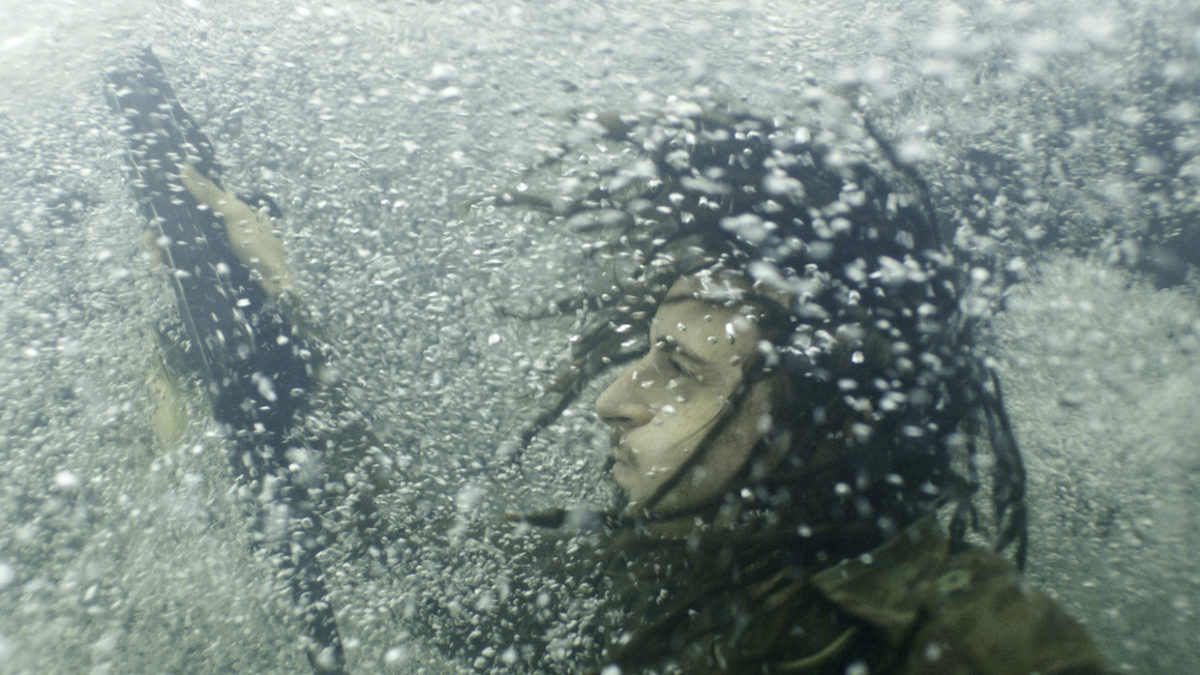The star of Monos (2019) is not one of the teenaged non-actors dragged to a boot camp in the Andes for weeks of training camp exercises that constituted the film’s audition process. Nor is it Moisés Arias, a former child of the culture industry known largely for his punchline role as the scrawny but smart Rico Suave on Disney’s Hannah Montana. Fully grown up and boasting an incredibly ripped physique that director Alejandro Landes allows him to flex in a tight black Speedo, Arias’s casting as Bigfoot, arguably the films most instrumental character, suggests a decision made with bringing commercial appeal to American audiences in mind.
Instead, it is English experimental musician Mica Levi’s score that carries a film whose trailer boasts that RogerEbert.com deemed it “a monumentally cinematic experience”. It’s not worth asking what that term means, but know that without Levi’s contributions, Monos would be an exhausting, empty film, rife with emotionless performances and inconsistent camerawork. By relying on Levi’s score and the stunning landscapes of the Colombian highlands, Landes scrapes together a work that is an exercise in atmosphere with little substance underneath.
The action follows the Monos, a group of child soldiers, through the highlands of the Colombian Andes. Originally tasked with guarding a prisoner and a cow, the Monos are seen failing through a number of plotlines that feel designed to lead into specific soundscapes, rendering the sequences and their consequences emotionless and arbitrary. The film is structured as though a Chekhov’s gun with the world’s loosest trigger appears in the characters’ hands every few minutes.
The group’s descent into chaos begins as expansive droning noises and heavy bass carry forward a night of drunken revelry lit by large fires as the teens, dressed in uniforms that suggest Yeezy Season 3 more than paramilitary garb, shoot their machine guns into the night. After a stray bullet hits the cow, Wolf, the leader of the group, shoots himself (off-screen, of course), fearing the consequences for his failure and plunging the group dynamics into disarray. His romantic partner, Lady, kicks at his blanket-wrapped corpse, framed first in a tight shot, before a nonsensical wide places them in the mountainous fog of the Andes. Not only does the sequence fail to convey any real sense of grief, but the latter shot seems to exist only to boast the landscape the film was shot in.
Before long, we’re swept back into an erratic series of hookups, shroom trips, shootouts, walks through dense rainforests, and underwater fights. The score in the latter two instances is especially impressive; the landscape’s natural sounds are transformed into what would be overwhelming compositions, yet the Hunger Games-esque insertion of these elements leads to a sterile, flat effect that rings hollow.
Monos’ refusal to grapple with any of the trauma surrounding these teenagers’ lives may be part of the film’s conceit, but it comes off as lazy filmmaking dismissive of a very real issue. A telling sequence occurs towards the end of the film: the Messenger (played by former child soldier Wilson Salazar) tells Bigfoot he’s like a son to him before Bigfoot shoots him in the back. Landes has the gall to immediately cut away from the scene and the incident is never revisited.
